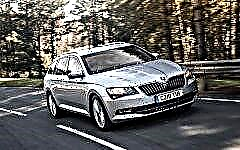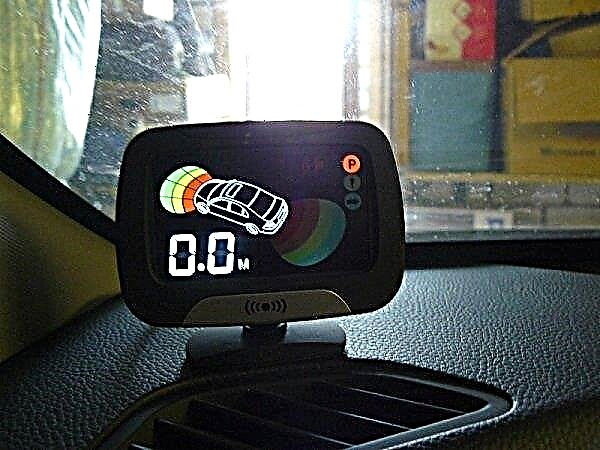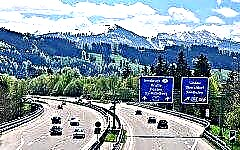

The content of the article:
- What is the German Autobahn
- How it all began
- Nazis and Autobahns: good PR
- How it is built
- How much is it
- Repairs
When it comes to high-quality highways, only the lazy will not remember the German autobahns. There is even a special category of tourists who specially come to Germany by car to ride along these highways in pursuit of experiences that, according to their convictions, will not be experienced anywhere else in the world ...
How do the Germans manage to create this miracle of highways? Let's take a look into the past and present and discover the secrets of the famous German Autobahn.
What is the German Autobahn

Photo: Autobahn near Dortmund
The word “autobahn” is translated quite prosaically: “road for cars”. In fact, it is neither more nor less - a road for traffic in both directions. There can be from two to three lanes on the autobahn in each direction, plus the rightmost lane for use by emergency services, which is separated from the main lanes by continuous markings, wider than usual, and which is prohibited for ordinary transport to enter.
Today, the length of the autobahns in Germany is about 13 thousand kilometers. The autobahn number in Germany always begins with the letter "A", followed by the serial number of the highway.
By the last digit, you can find out the direction of the Autobahn: odd numbers indicate roads that follow from north to south, even ones - from west to east.
On autobahns, there is a rule of minimum speed - 60 km / h. But there is no maximum speed here, there is only a recommended one. As a general rule, a speed of 130 km / h is recommended on German autobahns.
This is what attracts many motorists from Europe here: such a "high-speed exotic" exists only in Germany, on other highways in the EU there is a speed limit.
Dividing fences made of concrete or metal exclude the possibility of driving into the oncoming lane. As a rule, there are no traffic lights and intersections on the Autobahn - the movement of cyclists and pedestrian traffic is prohibited here.
How it all began

Photo: Autobahn Bonn - Cologne
There is a stamp that the Germans owe their autobahns to the Nazi regime and in particular to Adolf Hitler. But this is just a myth, traces of the Nazis' skillfully carried out propaganda work. In fact, the autobahns in Germany were invented long before Hitler came to power.
The construction of the first section of the German Autobahn began in 1913 and was completed in 1921. It was a section of a road without intersections and traffic lights. The length of the autobahn was only 8,400 m.
The construction of the road section was financed by German industrialists and simply wealthy citizens of the country who were not indifferent to the future of the automotive sphere of life. The road bore the proud name "Road for traffic and training" and was initially used as a race track.
A full-fledged autobahn entered the life of the Germans only in 1932, when the Bonn-Cologne highway, 20 km long, was put into operation. In those days, few cars could exceed the speed of 60 km / h, but on this autobahn, a speed limit of 120 km / h was set. The Bonn-Cologne Autobahn is the first toll highway in Germany.
Nazis and Autobahns: good PR

In the photo: Hitler at the opening of the new German Autobahn
Initially, the National Socialist Party of Germany fiercely opposed the construction of autobahns, justifying this by the fact that such toll highways are needed "only by the rich, aristocrats and capitalists of Jewish origin" and are absolutely useless for the ordinary German people.
The Nazi protests were so convincing that the autobahn between Cologne and Bonn was officially renamed a country road, thus allegedly emphasizing that there are no autobahns in Germany.
However, the Nazis protested against the construction of autobahns exactly until the moment they came to power. From that moment on, active construction of autobahns began throughout Germany, and precisely those projects of the turn of the 20-30s were used, which were so fiercely criticized only a few years ago.
At the insistence of Goebbels, at the opening of the construction of each autobahn, the Fuehrer of the nation always appeared, who was photographed with a shovel or a wheelbarrow. Thus, the myth that the construction of the autobahns was solely the merit of the Nazi party was consistently introduced into the consciousness of the Germans.
In fact, Hitler ordered to drive the civilian population to the construction as part of compulsory labor service. Over time, these workers were replaced by prisoners of concentration camps.
Construction was carried out at an accelerated pace, but by 1941 it slowed down, and in 1943 it stopped altogether, since it was not as profitable to transport military equipment by autobahns as by railways, and by this time the population had little transport, to put it mildly.
After the war, the German government resumed the construction of autobahns, the main goal of which remained to ensure high speed of movement of transport.
In the 21st century, a state reconstruction program began to operate, the purpose of which is to expand those areas that are the most congested or dangerous. From how much time has passed since the initial construction of the autobahns and the time of their reconstruction, we can conclude with what high quality these routes were built.
How it is built

In the photo: modern construction of the Autobahn in Germany
As with all countries in the world, road construction begins with careful, comprehensive planning. A layout is created that takes into account all the nuances of the passage of the autobahn, its connection with the already existing network of highways, interchange systems, bridges, exits.
Modern road construction in Germany is unthinkable without the participation of environmentalists: even such seemingly insignificant factors as the migration routes of wild animals are taken into account. German builders strive to create the most satisfying project for all.
In modern Germany, it is easy to get sued if a construction project does not meet the requirements of environmentalists and laws on citizens' residence: a noisy motorway built next to residential areas is unlikely to receive warm approval from local residents. Therefore, plans for the construction of autobahns are coordinated many times at different levels.
The Germans have no special unusual materials: the same asphalt, the same concrete as in the whole world. The secret lies in the fact that it is located under the top layer of the road - this is the so-called "road cushion", which is placed in several layers under the asphalt and can reach a couple of meters in height.
Before the start of construction, specialized equipment for earthworks passes along the route of the future autobahn, picking up to two meters of soil. In the resulting trench, depending on the characteristics of the soil, a geogrid can be laid for the strength of adhesion of future layers of the pillow.
The pillow itself is composed of layers of sand, clay and gravel. Each layer is carefully compacted using a special technique and poured with a solution of lime or calcium chloride. Impregnation with these chemical compounds leads to the fact that the layers are compacted, they constantly retain a fixed percentage of moisture.
After soaking the pillow, it is thoroughly mixed and compacted again.A travel pillow prepared in this way does not swell or sag as a result of moisture, physical exertion and temperature extremes.
When the travel cushion is ready, asphalt or concrete is laid on top of it. In Germany, concrete roads are additionally covered with a protective film layer, which prevents the concrete mass from cracking under the sun.
In Germany, there is no such popular in our country "fun" as laying asphalt in puddles after rain. The Germans are too lazy to start repairing the road as soon as they finish building the road. Perhaps that is why here, if it rains, road construction works immediately stop and resume only when the last puddle has dried up. This is another secret of the quality of the German autobahns.
Modern German autobahns are also being built taking into account the needs of the population living nearby. The roads are covered with a special compound that absorbs the sounds of traffic (this composition can reach ten centimeters in height throughout the entire area of the Autobahn!). Thus, living near the Autobahn does not become uncomfortable.
It is characteristic that exclusively domestic construction equipment is used in the construction of autobahns in Germany. The Germans have a very large experience in building highways, therefore they prefer to use exclusively domestic equipment, designed precisely for those requirements that are presented by the builders. In Germany, on the construction or repair of the Autobahn, you will not see imported asphalt pavers or any other construction machines.
How much is it

Today, the cost of building one kilometer of the German Autobahn costs the country an average of 6 million euros. The price is quite high, but it is fully justified by the high technologies used, high-quality specialized equipment and the qualifications of workers.
Pedantic and thrifty Germans understand perfectly well why they pay such a high price:
- Autobahns built taking into account all the requirements can withstand modern car traffic without any problems;
- German autobahns serve for a long time, providing high-quality road connections;
- repairs for the autobahn are required extremely rarely, and as a rule, it is planned - unplanned destruction of the track is a rare event here.
There is one more nuance due to which such a high price for the construction of the roadway does not bother the German government. The price of gasoline in Germany includes 80% of the tax, which mainly goes to the needs of road construction. So the construction costs to some extent lie on the shoulders of those very citizens who subsequently drive along the constructed autobahns.
Repairs

On average, the warranty period for the Autobahn in Germany is 30 years. This means that all these thirty years, the road construction company that was engaged in the construction of the highway is obliged to maintain its normal functional state at its own expense.
This rule contains another important reason for the high quality of German autobahns - which construction company would want to spend time and money on permanent repairs, if you can initially build a high-quality road structure and not roll off endless additional ones to "bring to the desired condition"?
Also, do not forget that German laws against construction companies are quite harsh: if an accident occurs due to poor-quality road surface, road workers will fall into the clutches of the judges, where they will face high fines.
This is another reason that patching on German autobahns is an impossible exotic: such repairs inevitably violate the integrity and flat surface of the track, which inevitably leads to traffic problems.
Autobahns in Germany are regularly used by about a third of the country's total car park. Only truck drivers pay for toll on the autobahns; for the rest, these wonderful roads remain free.
Recently in Germany, the question of the introduction of speed limits when driving on autobahns has been actively raised, so those who like high-speed driving should hurry up to fully appreciate the quality and unique characteristics of the legendary German "roads for traffic and training".











